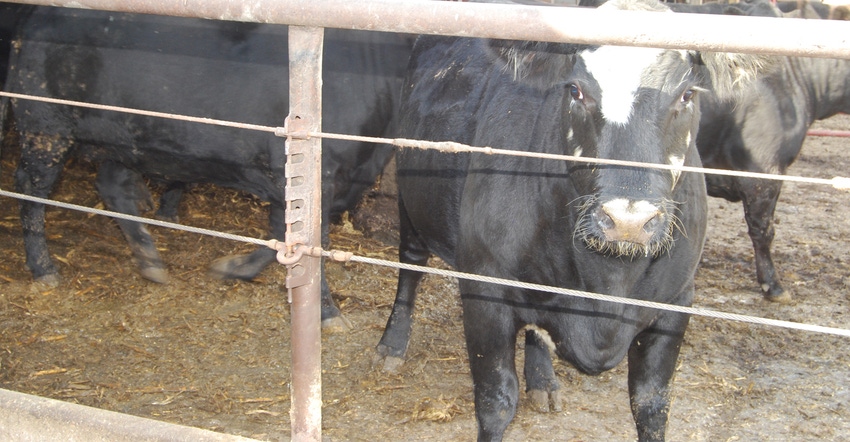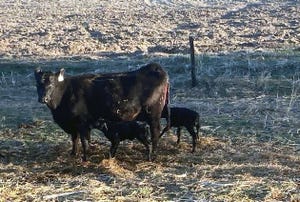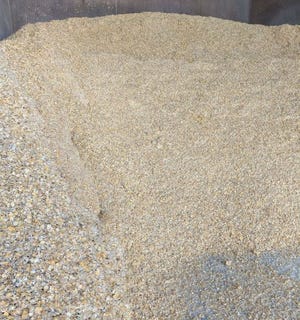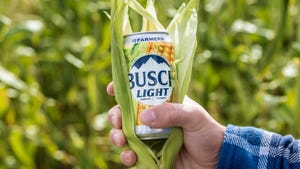Tips for cattle feeders using 'hold and hope' strategy
Guidelines offer ways to reduce rate of gain and hold cattle in condition until market potentially improves.
May 1, 2020

The COVID-19 pandemic continues to disrupt cattle markets. Packing plants have had to shut down for deep cleaning and when they open back up, they aren’t processing as many cattle per day as they did previously. Having a market that will take finished cattle at a suitable date has become a concern. In addition, the currently low live market prices and limited sale opportunities for fat steers have left many cattle feeders searching for solutions to reduce their economic loss.
Cattle prices are hurting. Cash sales have been depressed as packing plants operated at reduced capacity or shuttered their doors due to labor issues spurred by the pandemic.
In times of depressed markets many cattle feeders lean toward the “hold and hope” method of selling fed cattle, where they retain their cattle longer than is ideal with the hope of waiting out the downturn in the market. The strategy to hold cattle longer will depend on the goals of the operation and the stage of feeding of the cattle.
The good news is cattle are adaptable to a variety of feeding systems and programs, and their growth can be programmed in a predictable way through changing the net energy of the ration or using “programmed feeding.”
The following guidelines come from Iowa State University Extension beef specialists and University of Wisconsin Extension specialists to provide help for producers making these decisions:
Consider costs of holding cattle. For cattle ready or near ready for market, it may be best to sell these cattle when opportunities present themselves, even if prices are not ideal. Cost of gain and maintenance is high for animals at this stage of growth. Modeling of recent closeouts suggests that incremental feed conversion of cattle beyond today’s market weights of 1,400 to 1,500 pounds may exceed 10 to 11 pounds of feed dry matter per pound of gain.
Keep in mind the costs (feed and yardage) of owning the cattle longer and the potential losses from price discounts due to oversized carcasses, high yield grades and potential death loss.
It’s unrealistic to expect a group of cattle on feed to achieve zero gain while waiting for the market to regain ground. However, reducing the rate of gain and holding the cattle in condition may be possible if done properly.
Think about these suggestions when deciding on marketing decisions. These are costly strategies but would allow cattle to be held until they can hopefully be assigned a harvest date within a reasonable time frame. Longer holding periods do not guarantee demand and better prices for fed cattle due to uncertainty within the present market and an unknown timetable for return to normal business.
Maintain a daily gain. It should be at least 2.5 pounds per day to maintain marbling deposition. This would require a diet that is at least approximately 50 to 55 megacalories (Mcal) of net energy gain per hundredweight (Neg/cwt) dry matter. Many feeders may choose a more moderate approach of providing 55 to 58 Mcal per cwt with or without slightly limiting feed intake.
Holding beef-type cattle versus Holstein steers can look very different. Holstein steers can be fed high energy rations for a longer period compared to beef-type cattle without having negative effects on their fatness. Overall weight will still need to be monitored to ensure steers do not incur carcass weight discounts.
Adjust feed ration. Simple methods to reduce energy include increasing forage in the diet by 7.5% to 10%. This stepdown can happen abruptly by feeding an increase in clean corn stover, dry hay, haylage, corn silage, etc., with no negative impact on rumen health. Cattle feeders could feed up to 40% corn silage or 15% dry hay in the ration that would allow cattle to gain around 2.5 pounds per day while still maintaining sellable condition and quality grades. Of course, a higher forage diet will be associated with lower dressing percentage.
It may be beneficial to step back the potency of your implant program or even consider skipping the terminal implant on cattle that are about due for it to help limit rate of gain and reduce negative impact on quality grade if a lower energy holding ration will be fed to animals within 100 days of harvest.
Use limited feeding. If limiting their feed intake as part of the process to slow cattle down, one option is to allow the cattle on feed to only consume 90% of their current ration. Any use of limit feeding will only work effectively if there is adequate bunk space for the entire group to step up to eat at the same time.
This method should not be used in a self-feeder situation, as dominant cattle will continue to consume their share while imposing a greater feed intake limitation on the more submissive cattle in the same group. Whichever option fits your situation, work with your nutritionist to ensure balanced diets are being fed.
Don’t let cattle get too heavy. Be mindful of intentionally feeding cattle to excessive weights by holding them too long. Excessively heavy cattle do not tolerate heat and are more susceptible to acute interstitial pneumonia and respiratory distress. Harvest-ready cattle with black hair coats lacking shade and experiencing a temperature or humidity index of 79 degrees F or greater with no nighttime cooling are most susceptible to death from heat stress.
As cattle get too heavy and lay down too much condition, they may also receive discounts due to poor yield grades. Large cattle are also more susceptible to bruising and injury due to being too large to easily move through cattle handling systems and fit through some trailer doors. To reduce the risk of fatigued cattle syndrome, these cattle must be handled quietly during loading and unloading. Cattle feeders and truckers should be sure to follow Beef Quality Assurance guidelines when handling and transporting cattle.
Source: Iowa Beef Center, which is solely responsible for information provided and is wholly owned by the source. Informa Business Media and all its subsidiaries are not responsible for any of the content in this information asset.
You May Also Like



